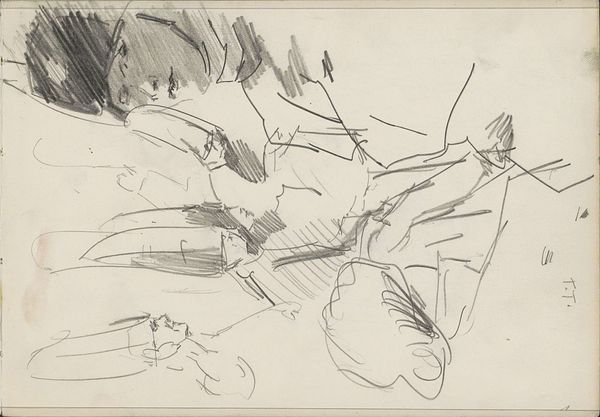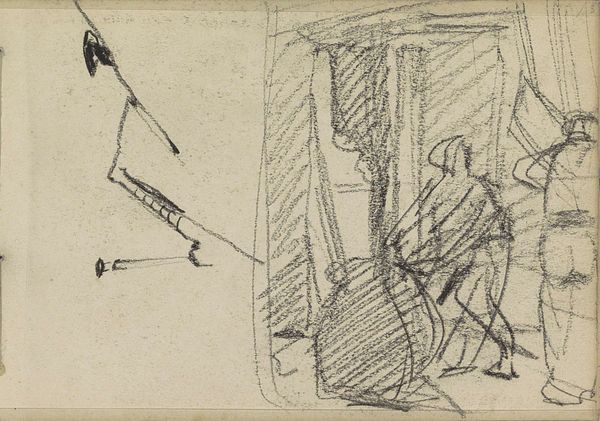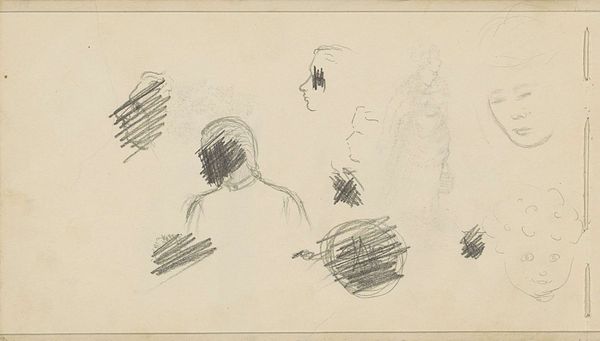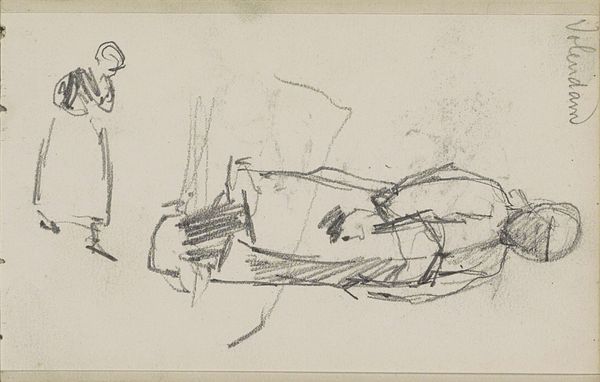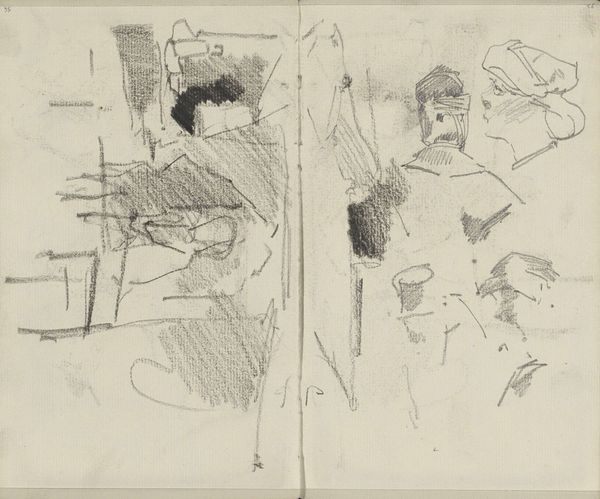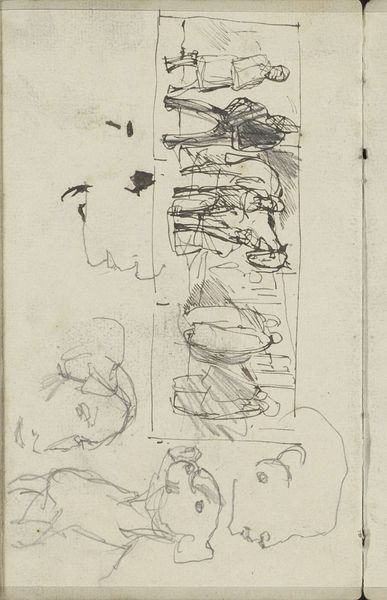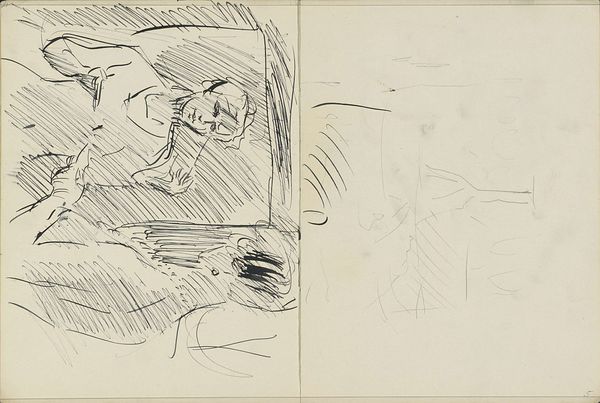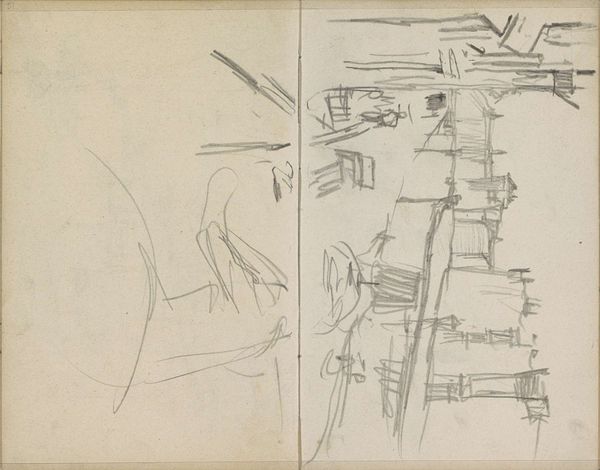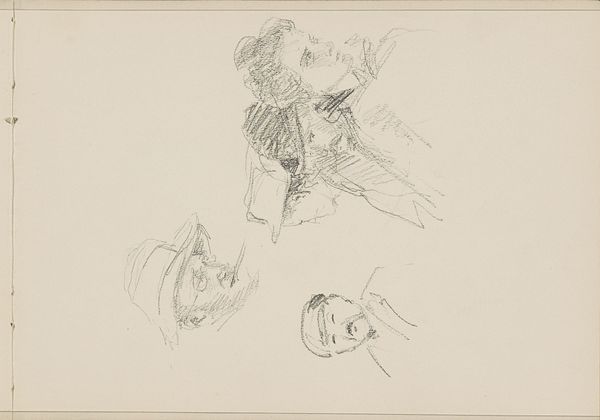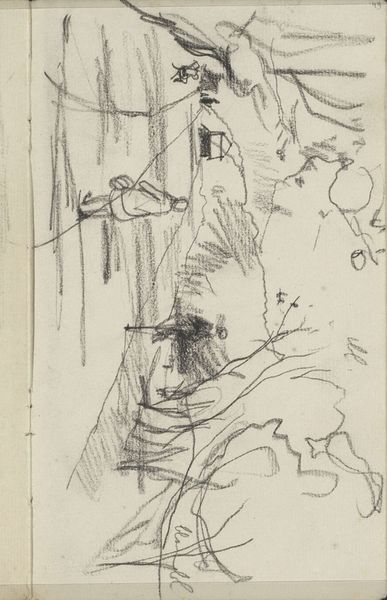
Copyright: Rijks Museum: Open Domain
Curator: Before us is "Studieblad met zittende vrouwen", or "Study Sheet with Seated Women," a drawing by Isaac Israels, made sometime between 1875 and 1934. It is rendered in pencil. What are your first impressions? Editor: There's a real sense of immediacy, a capturing of a fleeting moment. The stark, almost unfinished quality of the lines is very striking. Curator: Indeed. Looking at this drawing through the lens of art history, we might consider how Israels situates women within the framework of the late 19th and early 20th centuries. Are these society women? Are they laborers taking a break? There is no clear signifier. It lacks a distinctive setting. Editor: For me, it speaks to the raw process of art-making. You can almost feel Israels' hand moving across the paper. There's a physicality to the pencil strokes, a sense of material interaction. I wonder what the specific paper was like and what that contributed to the outcome. Was it the artist choice or based on convenience? Curator: Considering Israels' Impressionist leaning, we see him grapple with representing light and form, yet the figures remain somewhat anonymous. Who were these women? What are their stories? Do you think there is perhaps an erasure in only presenting a 'study'? Editor: I appreciate the directness, and this gets me thinking about the social implications of readily available materials such as drawing and sketching. He used the readily available pencil to rapidly prototype, perhaps even using them later for paintings or different works, where maybe we would see different levels of detail. The drawing is a work of art in its own right though, showcasing raw ideas. Curator: I concur. The absence of finish and distinct detailing encourages us to reflect on the complex societal structures within the framework of portraiture and its role. The incomplete feels quite thought-provoking. Editor: The means are simple: paper and pencil lead. But this study reveals something very complex. Curator: Yes, this sheet leaves many avenues open. A glimpse into a moment of art history. Editor: And it makes me think more deeply about what we expect an "artwork" to be. Thanks!
Comments
No comments
Be the first to comment and join the conversation on the ultimate creative platform.
